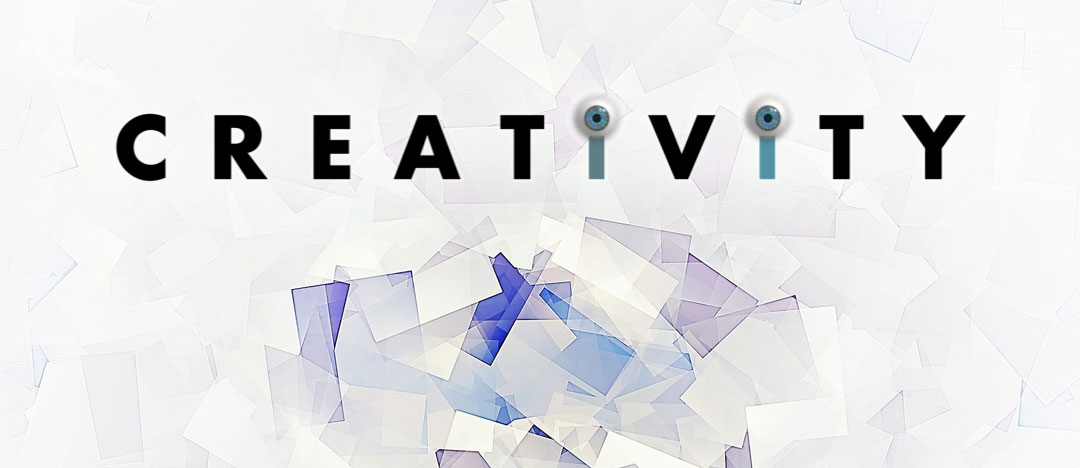The Eyes of Creativity

“When you ask creative people how they did something, they feel a little guilty because they didn’t really do it, they just saw something. It seemed obvious to them after a while. That’s because they were able to connect experiences they’ve had and synthesize new things.” -Steve Jobs. If Jobs was right, a key part of being creative is being observant – which makes creativity something you discover as much as you develop. It also elevates the importance of our perception and the methods we use to view the world.
Our ability to observe-discover-create is enabled by our eyes – the sensory organ in our head that triggers optic perceptions used to view the world, and our mind’s eye which is used to associate relationships, connections, and patterns from our mental bank of knowledge, experiences, and feelings. These are the eyes used in creativity to discover what is in front of us, around, and inside us.
The Basics Of “Saper Verde” (Learning How to See)
It is important to learn how to see because the visual stimuli that surround us are the dots we use to make creative connections. Part of Leonardo da Vinci’s genius can be attributed to his recognition that everything connects to everything else in the world. Using this principle of sight as the foundation of his focus, da Vinci looked at nature as a source of inspiration. It helped him transform what he saw into creative ideas and tangible innovations. Many of his revolutionary ideas came from simply patterning against what he observed in nature. His approach has been formalized into a discipline we now call biomimicry – the design and production of materials, structures, and systems that are modeled on biological entities and processes. Through the iterative process of exploration, examination, and experimentation, what Leonardo learned influenced what he saw, and what he saw impacted how he learned. Leonardo da Vinci applied biomimicry, for example, to the study of birds in hopes of enabling human flight. Although he was not successful with his own flying machine, his ideas lived on and were the source of insight for the Wright Brothers, who were also influenced by their observations of pigeons in flight.
What We See Depends Mainly on What We Look For
No two people see things the same way, even when looking at the same thing. One of the reasons is because what we see mainly depends on what we look for. Discoveries that lead to breakthrough ideas often begin as questions in search of answers. Unresolved issues of interest remain open in our minds like an app running in the background of any device. While the tab for the app may not be the one currently worked on, it is still actively processing behind the scenes. Clarence Birdseye, for example, discovered flash freezing to address a perpetual problem he had been wrestling with for years. Frozen foods were often mealy with a freezer burn taste. One day, he observed people from an indigenous tribe ice fishing. Clarence Birdseye took note of the way they ‘flash froze’ their fish—and forever changed the food industry. Henry Ford was always on the lookout for ways to cut costs and increase productivity. His revolutionary idea for an assembly line was sparked by the disassembly of animal carcasses that he saw in Chicago’s meat-packing plants. Ford applied what he observed but in reverse, by installing a moving line of parts to his own manufacturing process. The concept for Disneyland was inspired by Walt Disney’s travels to the Tivoli Gardens in Denmark. At the time amusement parks were not very safe or family-oriented. Disney found inspiration from his trip to Denmark and redefined what an amusement park could be. Thousands of people witnessed the inspirations behind Birdseye, Ford, and Disney’s discoveries. However, few observed what these creators saw with the same state of mind.
From Head to Hand
Because we are all capable of observing, and since it plays a critical role in the creative process, it might be tempting to think all it takes is a simple discovery. The answers to all your questions are out there, and all you have to do is see them. However, not all discoveries are created equal, and even those that are good are not fully formed or usable in their original state. The most enlightened flashes of insight are half-baked and require iterative editing before they are ready for implementation. The iterative process requires participation and collaboration from external and deviating mindsets. This is because “we cannot solve our problems with the same thinking we used when we created them” -Einstein. This same logic applies to editing and enhancing the ideas you discover or first develop. So, if you are a sole marketer, or don’t have a collaborative marketing team, it is important to work with someone else in your company or your agency for input and feedback to round off the edges and ideate further before implementation.
Should you need a sounding board, second opinion, or a company to greenlight additional ideas, concepts, or alternatives, feel free to contact us for our two cents, at no cost.
